Home » Hunting Culture » Using Upland Bird Feathers for Fly Tying Patterns
Using Upland Bird Feathers for Fly Tying Patterns
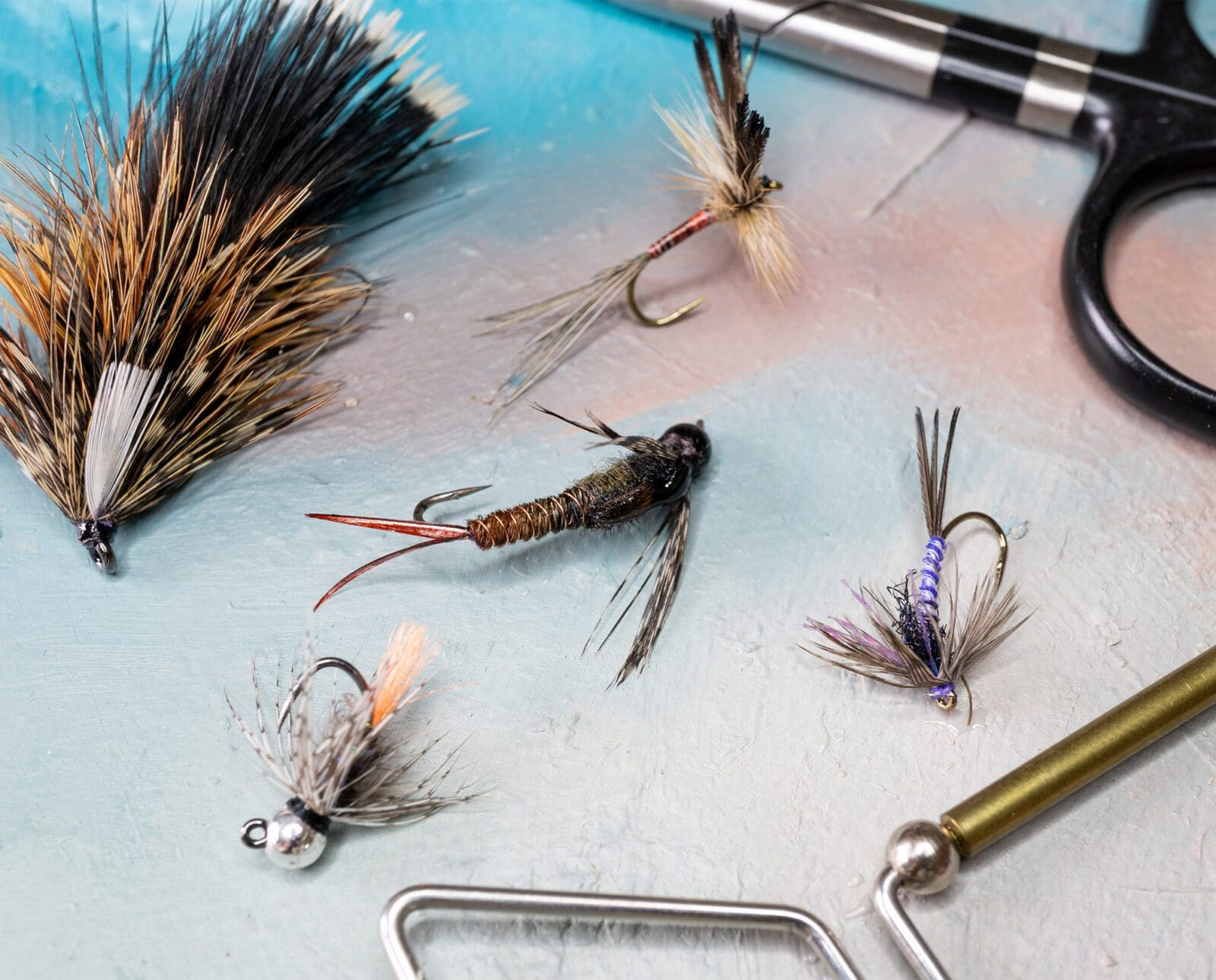
Marc Fryt is a former Army helicopter pilot, avid fly…
Beat the material shortage at the fly shop and learn how to tie five of the author’s favorite fly patterns using feathers from your past upland hunts
Over the past several years, the popularity of fly tying has grown rapidly and outpaced the ability of many suppliers to restock the shelves in fly shops. While it is difficult enough to find quality rooster hackle at a reasonable price, it is growing ever more challenging to get your hands on other feathers like those from Hungarian partridge, ruffed grouse, and pheasant for fly tying.
Due to this short supply, many fly tiers are relying more on synthetic materials to replace certain natural materials. While synthetics are incredibly useful on fly patterns and have gained greater attention, there are hurdles to match the beauty inherent with upland bird feathers, and, luckily, as hunters, we have a surplus of these materials. Beyond this, the utter joy and achievement that comes with hooking a fish with a fly tied with feathers you harvested is truly a visceral experience that makes two passions converge.
How to pluck or skin upland birds for fly tying
Much of the enjoyment with these fly patterns is tying with the feathers you have or may acquire from future hunts. If you are planning to collect some feathers on your next outing, there are a couple things to keep in mind—you can either pluck feathers or skin the entire bird. Note: there are benefits to doing both.
READ: Utilizing Turkey Feathers for Fly Tying
Plucking feathers from a game bird is a great way to start tying. If I am plucking feathers, I prefer to keep the particular feathers from the bird in separate zip lock baggies (i.e. tail, breast, rump, wing, and cape feathers all in their respective bags). Also, if the feathers are dusty or dirty, you can soak them in a bowl with dish soap and then rinse them in a colander to clean them up.
Skinning a bird, although time intensive, is a fantastic way to preserve an entire pelt which makes it easy to sort through feathers while at the tying bench. You can pick up the pelt, thumb through the feathers, and pluck the exact one that you are looking for. Also, this method takes away much of the headache of having to comb through a bag of jumbled feathers.
Further, if you are wanting to skin an entire game bird you should select a bird that is not too shot up or one that is hasn’t been roughed up by a dog. You may also need to take the time to carry the bird back to the car rather than stuffing it into your game vest, as this will cause feathers to fall off the bird. Taking these steps will help to provide you with a better pelt in the end.
Tools needed for fly tying
To get started with any of these patterns, you will need a few basic fly tying tools: a vise, scissors, bobbin, and whip finisher. A good pair of hackle pliers are also handy when wrapping feathers around the hook shank. Many upland feathers are small and tough to hold onto, but hackle pliers take much of the frustration out this and are well worth the money.
Super glue and UV resin are two other useful items to have on your tying bench. Tail fibers and wild turkey biots, when wrapped around a hook shank, can be a little fragile. To add some durability, you can apply a thin coating of super glue onto the hook shank before wrapping the tail fibers. To strengthen and protect turkey biots, after wrapping them around the hook to create an insect’s thorax, dab on a small amount of UV resin over the biots and then hit it with a UV light to cure.
Five fly patterns using upland bird feathers
Below are five of my favorite trout fly patterns tied with upland feathers to help inspire your fly tying table.
These patterns can be used on any trout stream or river that you frequent and can be modified based on the feathers that you have on hand. You may recognize these patterns since they are variations on established fly patterns, and that is the point. Rather than having to invent new fly patterns, or holding yourself to very traditional patterns, experiment with the feathers you have by incorporating them into other patterns you may already be fishing with.
The blowtorch nymph pattern
- Hook: Jig hook; sizes 12-18 (Example: Fulling Mill 5045)
- Bead: Slotted tungsten bead, 2.0 – 4.0mm
- Thread: Black
- Tail: Glo Brite Floss (orange)
- Ribbing: Pearl tinsel (small)
- Body: Fibers from wild turkey marabou
- Hackle: Hungarian partridge
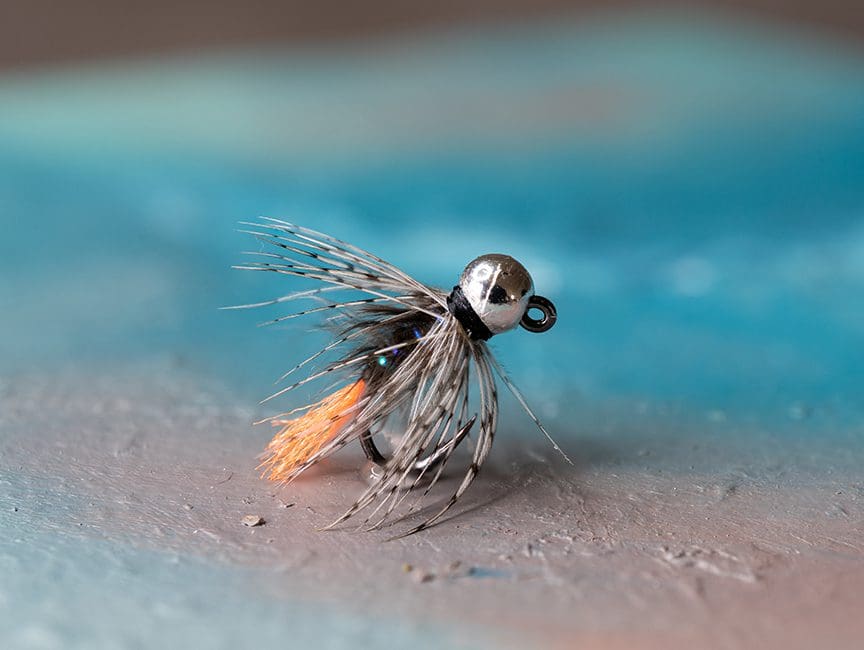
This nymph pattern gains its effectiveness from the movement and bugginess of the hun feathers. Further, the wrapped turkey marabou fibers around the hook shank help to build movement into the body of nymphs, but you will want to make sure to twist it together with a piece of tying thread to increase durability.
Beyond nymph and wet fly patterns, consider using partridge or even grouse feathers in other applications.
“I like using partridge (feathers) in the tail segment of my crawfish patterns,” said Ethan Crawford, a fly fishing guide and North 40 Fly Shop employee in Spokane, Washington. “If I wrap some partridge near the base of the crawfish tail, it helps to pulsate the fly as it moves through the water.”
The feather bugger pattern
- Hook: Streamer hook (3XL, heavy); sizes 6-10 (Example: Firehole 839)
- Weight: .020-inch lead-free wire
- Thread: Black
- Tail: Wild turkey marabou
- Body: Pheasant feathers
- Cheeks: Pheasant white neck feathers
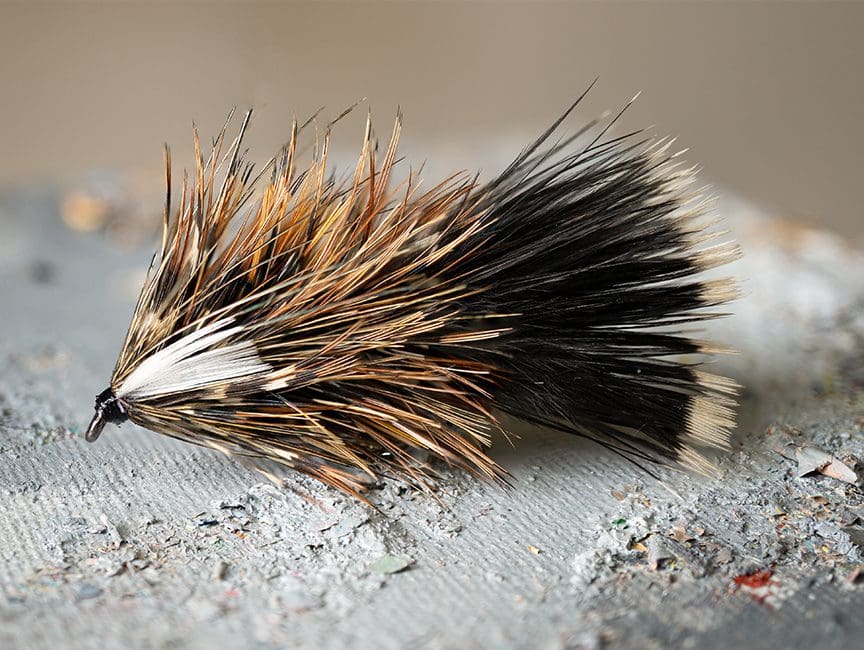
With the feather bugger, there is a lot of room for experimentation. If you have an entire pheasant skin, then you can truly create some amazing streamer patterns by mixing pheasant feather colors on the hook. You can also try substituting the pheasant with grouse or chukar feathers. I have even used ruffed grouse marabou as the tail on smaller versions of this fly for use on streams and creeks.
The purple haze emerger pattern
- Hook: Klinkhammer style hook; sizes 10-18 (Example: Daiichi 1160)
- Thread: Purple
- Shuck: Fibers from wild turkey flat
- Abdomen: Wild turkey biot, dyed or colored purple with a permanent marker or nail polish
- Thorax: Black Ice Dubbing
- Underwing: Purple Krystal Flash
- Hackle: Quail soft hackle
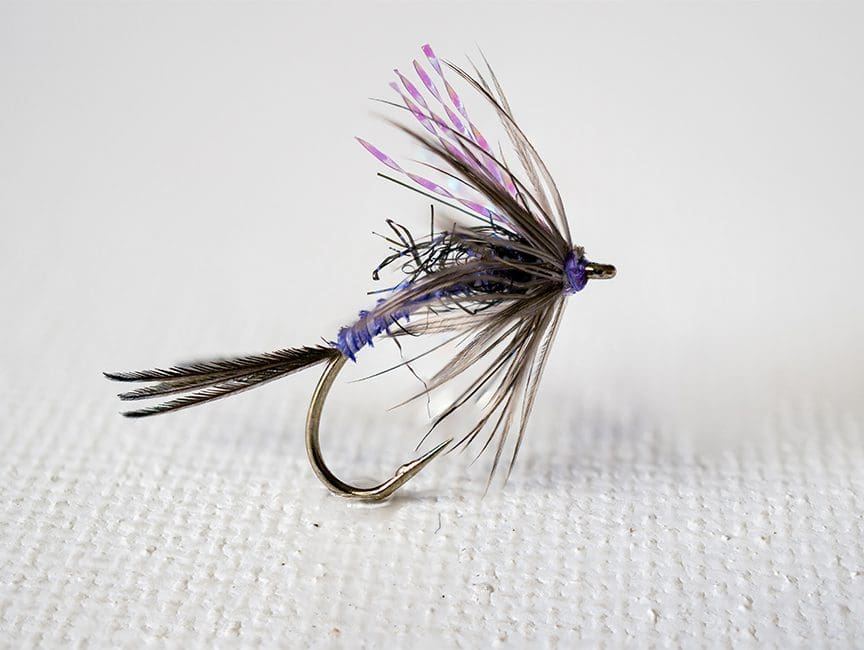
“Biots are one of my favorite materials to use in order to create bodies on mayflies, especially cripple patterns,” Crawford noted. “You can wrap biots around the hook shank to closely imitate the segmented abdomen on mayflies.”
Biots are from the leading edge of a turkey’s primary wing feather and have a wide range of applications. You can also color the biots with a permanent marker or nail polish, or dye them with an acid dye that is available at most hobby stores to match a particular mayfly species.
The split-wing mayfly pattern
- Hook: Standard dry fly hook; sizes 12-18 (Example: Daiichi 1180)
- Thread: Brown
- Tail: Fibers from pheasant rump feathers
- Abdomen: Wild turkey biot, dyed or colored brown with a permanent marker or nail polish
- Wings: Fibers from a wild turkey flat
- Hackle: Dry fly hackle from rooster cape or saddle
- Thorax: Brown dry fly dubbing
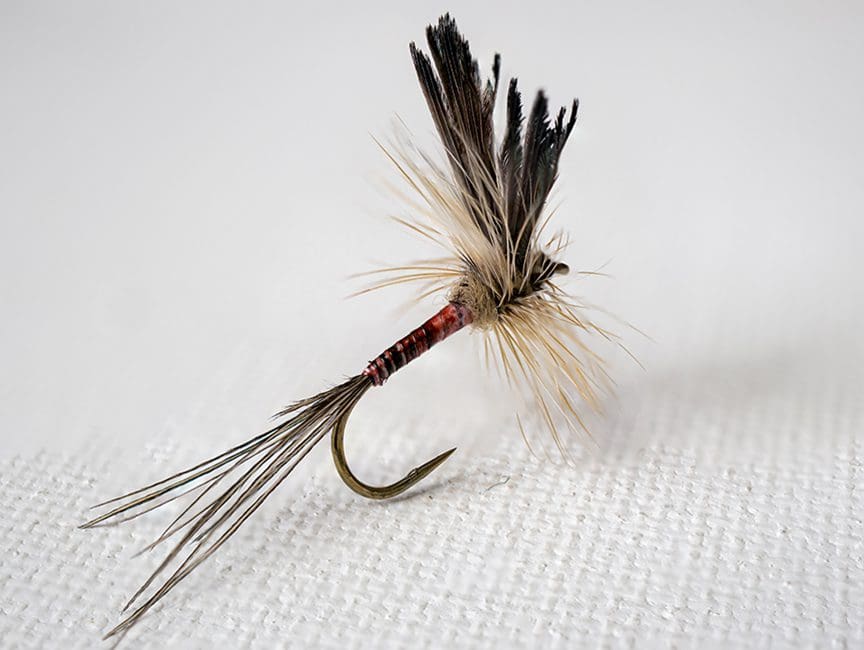
While this mayfly pattern is subtle and doesn’t float too well in turbulent waters, it can be killer on rivers and streams with gentle currents and picky trout.
I like using fibers from pheasant rump feathers because they have enough stiffness to create surface tension between the fly and the water which increases floatation. You can also use two breast feathers from other upland bird feathers like quail, chukar, or partridge to create the upright wings.
The 20-incher stonefly pattern
- Hook: Bent shank nymph hook; sizes 6-12 (Example: Umpqua U106)
- Bead: Tungsten bead, 3.0 – 4.5mm
- Thread: Black
- Tail: Wild turkey biots, dyed or colored brown with a permanent marker or nail polish
- Ribbing: Copper wire (small)
- Abdomen: Pheasant tail fibers
- Wingcases: Fibers from wild turkey flat
- Thorax: Mix of black, olive, and brown dubbing or hare’s ear dubbing
- Legs: Ruffed grouse soft hackle
- Glue: UV resin or head cement over wing cases
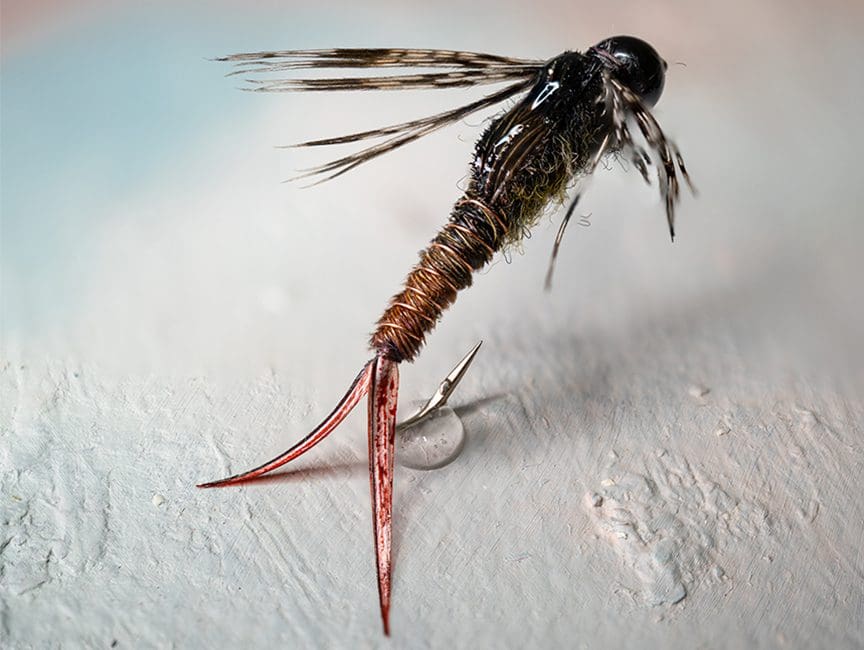
The 20-incher stonefly is a fun stonefly nymph pattern that utilizes a mix of upland birds. You can change this pattern up a lot with various feathers and even tie the fly in much smaller sizes to mimic mayfly nymphs. By using other upland feathers in this pattern, you will also be surprised by the color combinations you can come up with to replicate certain stonefly or mayfly species found on your local waters.
Beyond the flies listed above, the greatest tip I can offer is to experiment with the bird feathers that you have and to consider keeping more feathers, or even full skins, in the future. As hunters and fly fishers, every bird brought to hand is a valuable fly tying opportunity. Seeing those feathers born again into fly patterns and cast out onto a trout stream is enough to strike a smile across any angler’s face.
Marc Fryt is a former Army helicopter pilot, avid fly fisherman, and freelance writer and photographer. Marc also currently resides in Spokane, Wash., and is a guide at Fly Fish Spokane.



